Cultural tours in Europe offer an unparalleled opportunity to immerse oneself in the continent’s rich tapestry of history, art, and tradition. From exploring ancient ruins to admiring masterpieces in world-renowned museums, these tours provide a window into the diverse cultural heritage that has shaped Europe.
As you embark on a cultural tour of Europe, you will discover the continent’s vibrant cities, each with its own unique character and charm. You will visit iconic landmarks, such as the Eiffel Tower in Paris, the Colosseum in Rome, and the Acropolis in Athens, and gain a deeper understanding of the historical events that have shaped Europe’s past.
Cultural Heritage and History
Europe is a melting pot of cultures, each with its own unique heritage and history. This rich tapestry of cultures has created a continent that is home to some of the world’s most iconic landmarks and monuments. From the ancient ruins of Greece and Rome to the medieval castles of France and England, Europe’s past is on display for all to see.
UNESCO World Heritage Sites
UNESCO has designated over 500 sites in Europe as World Heritage Sites, recognizing their outstanding universal value. These sites include cultural landmarks, natural wonders, and mixed sites that combine both cultural and natural elements. Some of the most popular UNESCO World Heritage Sites in Europe include:
- The Acropolis of Athens, Greece
- The Colosseum in Rome, Italy
- The Palace of Versailles, France
- The Stonehenge, United Kingdom
- The Neuschwanstein Castle, Germany
These sites are just a few examples of the many cultural treasures that Europe has to offer. By visiting these sites, you can learn about the history, culture, and art of Europe, and gain a deeper appreciation for the continent’s rich heritage.
Art and Architecture: Cultural Tours In Europe
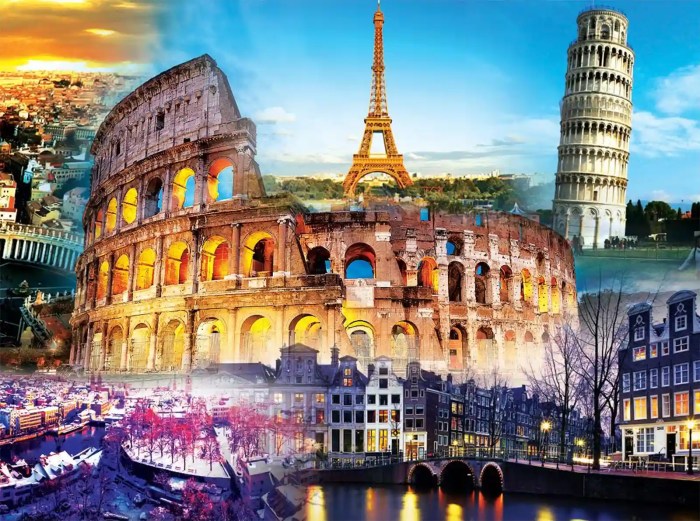
Europe is a treasure trove of artistic and architectural wonders, with renowned museums and galleries housing masterpieces from across the centuries. From the grandeur of medieval cathedrals to the sleek lines of modern skyscrapers, Europe’s built environment is a testament to the creativity and ingenuity of its people.
Art Museums and Galleries
Europe’s art museums and galleries offer an unparalleled opportunity to experience the works of some of the world’s greatest artists. The Louvre in Paris, the Uffizi Gallery in Florence, and the Hermitage Museum in St. Petersburg are just a few of the many institutions that house collections that span centuries and cultures.
- The Louvre is home to Leonardo da Vinci’s Mona Lisa, one of the most famous paintings in the world.
- The Uffizi Gallery houses works by Botticelli, Michelangelo, and Raphael, among others.
- The Hermitage Museum has one of the largest collections of Dutch and Flemish art outside the Netherlands.
Architectural Marvels
Europe’s architectural heritage is equally impressive, with buildings that range from the Gothic spires of Notre Dame Cathedral in Paris to the modernist masterpiece of the Guggenheim Museum in Bilbao, Spain.
- Notre Dame Cathedral is a prime example of Gothic architecture, with its soaring vaults and intricate stained-glass windows.
- The Guggenheim Museum is a titanium-clad building designed by Frank Gehry, and its swirling forms have become an iconic landmark.
- The Colosseum in Rome is one of the most recognizable structures in the world, and it once hosted gladiatorial contests and other public spectacles.
Influence on Global Culture
European art and architecture have had a profound influence on global culture. The Renaissance, which began in Italy in the 14th century, saw a revival of interest in classical art and architecture, and its influence can be seen in buildings and artworks around the world.
- The Renaissance artist Leonardo da Vinci is considered one of the greatest painters of all time, and his work has influenced artists for centuries.
- The Baroque period, which followed the Renaissance, saw the development of elaborate and ornate architecture, and its influence can be seen in churches and palaces throughout Europe.
- The modernist movement of the 20th century rejected traditional forms and materials, and its influence can be seen in buildings and artworks around the world.
Music and Performing Arts

Europe is a hub of musical and performing arts, boasting a rich history and vibrant contemporary scene. From the grandeur of opera houses to intimate concert halls, Europe offers a diverse range of venues that showcase musical excellence.
Immerse yourself in Europe’s rich heritage with captivating cultural tours. Explore iconic landmarks, savor delectable cuisine, and delve into local customs. For a thrilling departure from history, consider extreme sports vacations. Unleash your adrenaline with activities like bungee jumping, skydiving, or mountain climbing.
Then, return to the tranquil ambiance of Europe’s cultural treasures, where you can reflect on your adventures while appreciating the timeless beauty of the continent.
The role of performing arts in European culture cannot be overstated. Music, dance, and theater have played an integral role in shaping European identity, providing a platform for social commentary, cultural exchange, and artistic innovation.
Opera and Classical Music
Europe is renowned for its opera houses, which have been the stage for some of the world’s most celebrated operas. From the opulent Teatro alla Scala in Milan to the grand Palais Garnier in Paris, these venues offer a unique blend of music, drama, and spectacle.
- Vienna State Opera: Home to the Vienna Philharmonic Orchestra, known for its exquisite interpretations of classical masterpieces.
- Royal Opera House, London: One of the world’s leading opera houses, staging both traditional and contemporary productions.
- La Scala, Milan: A legendary opera house with a rich history and a reputation for artistic excellence.
Contemporary Music and Festivals
Europe’s music scene extends beyond classical music, encompassing a wide range of contemporary genres. From electronic dance music to indie rock, Europe hosts numerous festivals and events that cater to diverse musical tastes.
- Glastonbury Festival, UK: One of the world’s largest and most iconic music festivals, featuring a diverse lineup of artists.
- Tomorrowland, Belgium: A renowned electronic dance music festival that attracts attendees from around the globe.
- Roskilde Festival, Denmark: A major music festival known for its eclectic programming and commitment to sustainability.
Performing Arts
In addition to music, Europe is a hub for other performing arts, including dance and theater. From the ballet companies of the Paris Opera to the experimental theater productions of the Edinburgh Fringe Festival, Europe offers a diverse range of performances.
Cultural tours in Europe offer an immersive experience into the continent’s rich history and heritage. However, for families with children, balancing cultural exploration with relaxation can be a challenge. Consider incorporating a stay at one of the many family-friendly resorts scattered across Europe.
These resorts provide a perfect blend of entertainment and educational activities, ensuring a memorable and enriching experience for all ages. Afterwards, resume your cultural exploration, discovering the hidden gems and timeless traditions that make Europe so captivating.
- Royal Ballet, London: One of the world’s leading ballet companies, renowned for its technical excellence and artistic innovation.
- Théâtre du Soleil, Paris: A renowned theater company known for its experimental and politically engaged productions.
- Edinburgh Fringe Festival: The world’s largest arts festival, featuring a vast array of theater, dance, comedy, and music performances.
Cuisine and Gastronomy
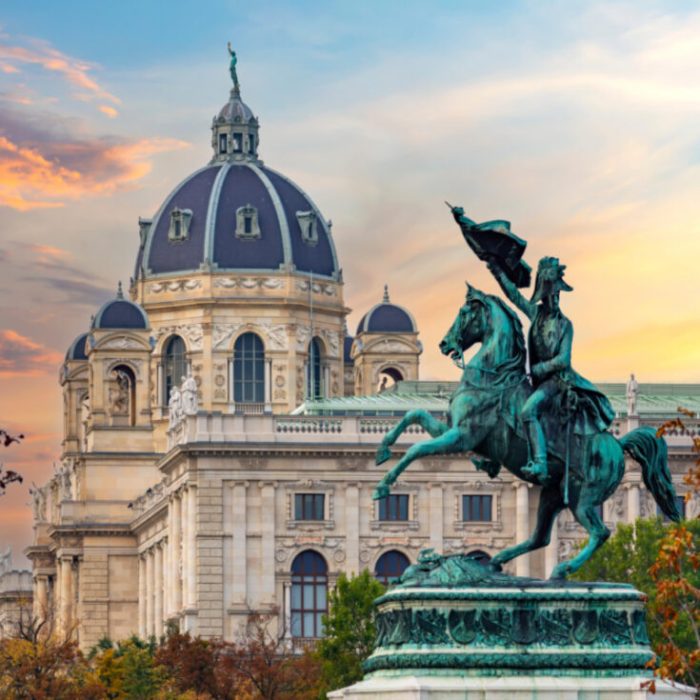
European cuisine is a diverse and ever-evolving tapestry of flavors, traditions, and culinary innovations. Each region boasts its unique culinary heritage, influenced by geography, history, and cultural exchanges.
To truly immerse oneself in the cultural richness of Europe, a culinary exploration is a must. From the rustic charm of Mediterranean cuisine to the sophisticated elegance of French haute cuisine, the continent offers a smorgasbord of gastronomic delights.
Culinary Traditions of Different European Regions
The culinary landscape of Europe is a patchwork of diverse traditions, each with its own distinct flavors and techniques.
| Region | Signature Dishes | Key Ingredients |
|---|---|---|
| Mediterranean | Paella (Spain), Pizza (Italy), Moussaka (Greece) | Seafood, olive oil, vegetables, herbs |
| Central Europe | Schnitzel (Austria), Goulash (Hungary), Pierogi (Poland) | Meat, potatoes, cabbage, dairy |
| Eastern Europe | Borscht (Ukraine), Pelmeni (Russia), Kvass (Belarus) | Beets, dumplings, fermented beverages |
| Western Europe | Escargot (France), Fish and Chips (United Kingdom), Bouillabaisse (France) | Seafood, dairy, vegetables, herbs |
| Nordic | Gravlax (Sweden), Smørrebrød (Denmark), Lingonberry Jam (Finland) | Fish, rye bread, berries, dill |
Michelin-Starred Restaurants and Signature Dishes
Europe is home to a constellation of Michelin-starred restaurants, culinary temples renowned for their exceptional cuisine and impeccable service.
- El Celler de Can Roca (Girona, Spain): “The Snail,” a dish featuring snails cooked in a variety of textures.
- Noma (Copenhagen, Denmark): “The Hen and the Egg,” an innovative dish that explores the different stages of an egg’s life cycle.
- L’Arpège (Paris, France): “The Beetroot,” a dish showcasing the versatility of beetroot through multiple preparations.
- The Fat Duck (Bray, United Kingdom): “Sound of the Sea,” a multi-sensory dish that evokes the essence of the ocean.
- Mirazur (Menton, France): “Vegetables in Olive Oil,” a celebration of local produce and the simplicity of Mediterranean cuisine.
Must-Try Local Delicacies and Their Cultural Significance
Beyond Michelin-starred restaurants, Europe offers an array of must-try local delicacies that embody the cultural heritage and flavors of each region.
Cultural tours in Europe offer an enriching experience for families. Whether it’s exploring historical landmarks or immersing in local traditions, these tours cater to diverse interests. However, for those seeking a balance between cultural exploration and family-friendly fun, consider exploring family-friendly resorts.
These resorts often feature kid-friendly amenities, entertainment options, and proximity to cultural attractions, ensuring a memorable and enriching European adventure for the whole family.
- Fish and Chips (United Kingdom): A beloved British staple, this dish symbolizes the country’s maritime history and love of hearty comfort food.
- Crêpes (France): Thin, delicate pancakes that are a culinary canvas for sweet or savory fillings, reflecting France’s rich culinary traditions.
- Gelato (Italy): A frozen treat that epitomizes Italian passion for food and indulgence, made with fresh milk, sugar, and natural flavors.
- Gouda Cheese (Netherlands): A semi-hard cheese known for its buttery texture and mild, nutty flavor, representing the Netherlands’ dairy-centric culture.
- Baklava (Greece): A sweet pastry made with layers of filo dough, nuts, and honey, symbolizing the country’s rich culinary heritage and Ottoman influences.
Festivals and Traditions
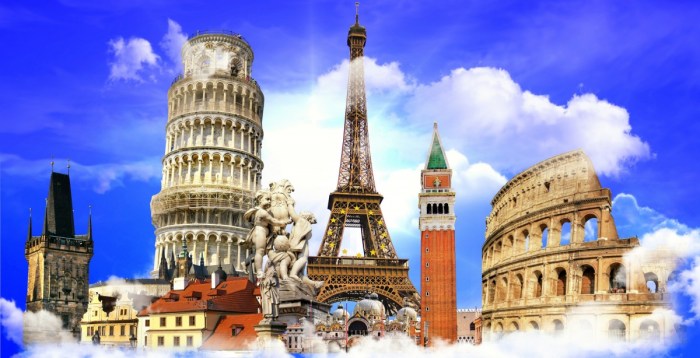
Europe is a tapestry of vibrant cultures, each with its unique festivals and traditions that have been passed down through generations. These events are not mere spectacles but integral expressions of a community’s heritage, beliefs, and identity.
Major European Festivals, Cultural tours in Europe
Some of the most renowned European festivals include:
- Oktoberfest (Germany): A 16-day beer festival held in Munich, celebrating Bavarian culture with traditional music, costumes, and food.
- Carnaval (Spain): A pre-Lenten celebration featuring elaborate parades, costumes, and dancing, particularly in cities like Cadiz and Tenerife.
- Edinburgh Fringe Festival (Scotland): The world’s largest performing arts festival, showcasing theater, comedy, music, and dance from around the globe.
- Cannes Film Festival (France): An annual gathering of filmmakers, actors, and film enthusiasts, showcasing the latest cinematic achievements.
- Glastonbury Festival (England): A music and performing arts festival that attracts thousands of attendees and features a diverse lineup of artists.
Customs and Traditions
These festivals are steeped in centuries-old customs and traditions. For example, during Oktoberfest, participants wear traditional Bavarian clothing called “lederhosen” and “dirndls.” In Carnaval, revelers don colorful costumes and masks, while in Edinburgh, street performers entertain crowds with a variety of acts.
Preserving Cultural Identity
Festivals play a vital role in preserving cultural identity. They provide opportunities for communities to come together, celebrate their shared heritage, and pass on traditions to future generations. By participating in these events, individuals not only enjoy entertainment but also strengthen their connection to their culture and community.
Itineraries and Recommendations
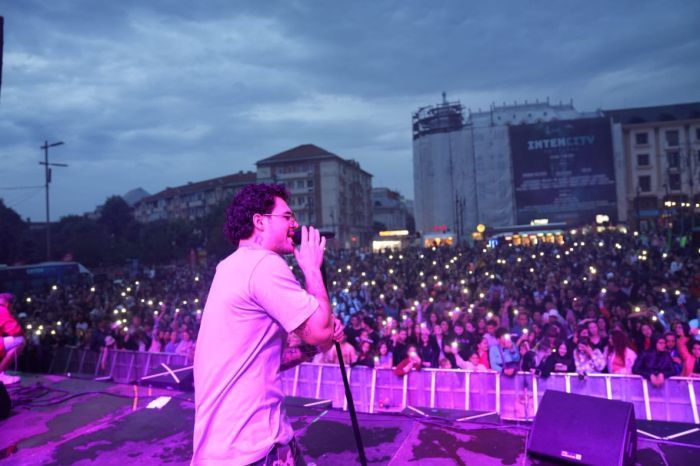
Europe’s rich cultural heritage offers a diverse array of experiences for discerning travelers. To fully immerse yourself in the continent’s cultural tapestry, consider embarking on a tailored itinerary that highlights key destinations and showcases the region’s artistic, historical, and culinary treasures.
Sample Itinerary
A comprehensive cultural tour of Europe could span several weeks or even months, allowing you to delve deeply into each destination’s unique offerings. Here’s a suggested itinerary that encompasses some of the continent’s most iconic cultural hubs:
- Week 1: Begin in London, exploring the British Museum, the National Gallery, and the Tower of London. Continue to Paris, visiting the Louvre, the Musée d’Orsay, and the Eiffel Tower.
- Week 2: Journey to Rome, immersing yourself in the Vatican Museums, the Colosseum, and the Trevi Fountain. From there, head to Florence, renowned for the Uffizi Gallery, the Ponte Vecchio, and Michelangelo’s David.
- Week 3: Discover the vibrant cultural scene of Barcelona, visiting the Sagrada Família, the Picasso Museum, and Park Güell. Conclude your tour in Vienna, exploring the Schönbrunn Palace, the Kunsthistorisches Museum, and the Vienna State Opera.
Must-Visit Museums, Art Galleries, and Historical Sites
Europe is home to a vast array of cultural institutions, each with its own unique collection of treasures. Among the most renowned museums and art galleries are:
- The Louvre, Paris: Housing masterpieces like the Mona Lisa and Venus de Milo, this iconic museum is a must-see for art enthusiasts.
- The British Museum, London: With an extensive collection spanning ancient Egypt to modern art, this museum offers a comprehensive exploration of human history and culture.
- The Uffizi Gallery, Florence: Renowned for its Renaissance masterpieces by Botticelli, Michelangelo, and Leonardo da Vinci, this gallery provides a glimpse into the golden age of Italian art.
- The Vatican Museums, Rome: This vast complex houses an unparalleled collection of art and artifacts, including the Sistine Chapel ceiling by Michelangelo.
- The Kunsthistorisches Museum, Vienna: Showcasing a diverse collection from the Habsburg dynasty, this museum includes works by Titian, Rubens, and Rembrandt.
For those interested in history, Europe’s rich past is reflected in its numerous historical sites. Consider visiting:
- The Colosseum, Rome: This iconic amphitheater once hosted gladiatorial contests and public spectacles, providing a glimpse into the grandeur of ancient Rome.
- The Tower of London, London: A historic castle with a dark past, the Tower has served as a royal palace, a prison, and an execution site.
- The Acropolis, Athens: This ancient citadel is home to the Parthenon, a masterpiece of classical Greek architecture.
- The Palace of Versailles, Paris: Once the lavish residence of French royalty, this opulent palace offers a glimpse into the extravagant lifestyle of the ancien régime.
- The Schönbrunn Palace, Vienna: This magnificent palace was the summer residence of the Habsburg emperors and is renowned for its stunning gardens and opulent interiors.
Tips for Planning a Culturally Enriching European Adventure
To make the most of your cultural tour of Europe, consider the following tips:
- Plan your itinerary carefully: Research destinations and attractions in advance to create an itinerary that aligns with your interests.
- Purchase a museum pass: Many cities offer passes that grant access to multiple museums, saving you money and time.
- Book tours and tickets in advance: Especially during peak season, it’s advisable to secure tickets and tours ahead of time to avoid disappointment.
- Learn a few basic local phrases: Making an effort to communicate in the local language can enhance your interactions and show respect for the culture.
- Be respectful of cultural differences: Observe local customs and dress codes, and be mindful of noise levels in museums and historical sites.
Final Conclusion
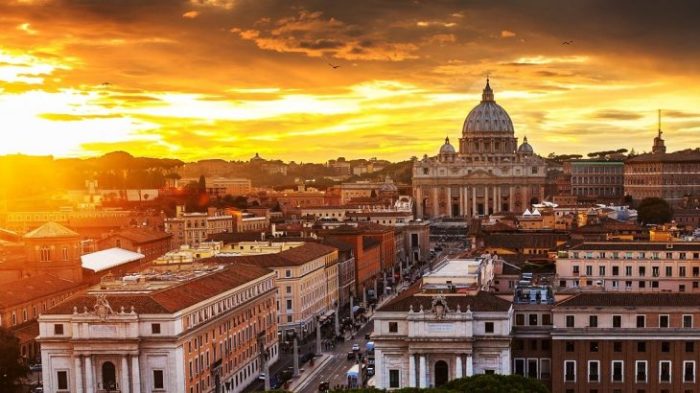
Whether you are interested in art, history, music, or gastronomy, a cultural tour of Europe is sure to provide an unforgettable and enriching experience. These tours offer a unique opportunity to explore the continent’s rich cultural heritage and gain a deeper appreciation for its diverse traditions.
Query Resolution
What is the best time to take a cultural tour of Europe?
The best time to take a cultural tour of Europe is during the shoulder seasons (April-May and September-October) when the weather is mild and there are fewer crowds.
How long should I plan for a cultural tour of Europe?
The duration of your cultural tour will depend on your interests and budget. However, most tours last between 7 and 14 days.
What are some of the most popular cultural destinations in Europe?
Some of the most popular cultural destinations in Europe include Paris, Rome, London, Florence, and Athens.